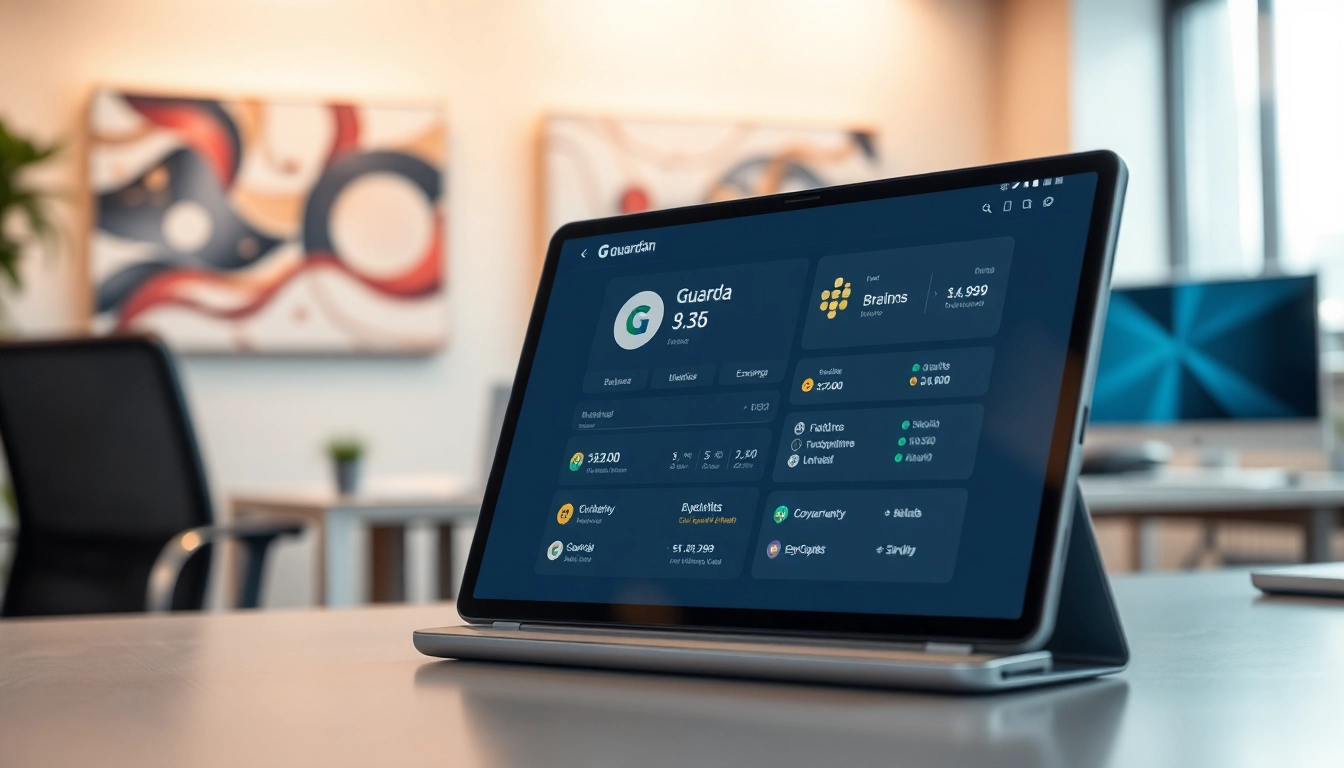Understanding the Debt Repayment Tool
What is a debt repayment tool?
A debt repayment tool is a digital or physical resource designed to assist individuals in managing and repaying their debts effectively. These tools can come in various forms, including spreadsheets, online calculators, or dedicated software, which help users track their debts, calculate monthly payments, and visualize their repayment journey. By using a debt repayment tool, individuals can gain a clearer understanding of their financial situation and develop a strategic plan for tackling outstanding debts.
How does a debt repayment tool help manage debt?
Debt repayment tools serve several critical functions in debt management. Firstly, they provide users with a comprehensive overview of their existing debts, including interest rates, due dates, and total amounts owed. This information allows users to prioritize their debts, focusing on those with higher interest rates or shorter repayment terms.
Furthermore, a debt repayment tool enables users to simulate various repayment scenarios. By entering different variables such as payment amounts and schedules, individuals can assess the impact of their choices and find the most effective strategy for reducing their debt. This not only enhances financial literacy but also instills confidence in the decision-making process.
An effective debt repayment tool encourages regular monitoring of progress, allowing users to celebrate milestones and stay motivated throughout their repayment journey. With visual aids and projections, individuals can easily see how far they’ve come and how close they are to achieving financial freedom.
Key features of an effective debt repayment tool
To maximize its benefits, a debt repayment tool should encompass several vital features:
- Comprehensive Debt Tracking: It must list all debts comprehensively, including balances, interest rates, and payment terms.
- Calculators: It should include calculators that help users estimate payments and project repayment schedules.
- Visual Representation: Graphs or charts that demonstrate the debt reduction trend over time can enhance user engagement and provide motivation.
- Flexibility: The tool should allow customization based on individual financial situations, accommodating varying debt sizes and repayment abilities.
- Goal Setting and Reminders: Features that help users set financial goals and send reminders for upcoming payments can ensure adherence to the repayment plan.
Common Challenges in Debt Management
Identifying personal debt pitfalls
Recognizing personal debt pitfalls is crucial for effective debt management. Many individuals fall into common traps that exacerbate their financial situation, such as:
- Ignoring Debt: Avoiding communication with creditors or neglecting payments can lead to worsening debt situations.
- Living Beyond Means: Continuing to spend beyond their financial capabilities can plunge individuals deeper into debt.
- Failure to Prioritize Payments: Not focusing on high-interest debts first can result in paying more in interest over time.
By utilizing a debt repayment tool, individuals can overcome these challenges by creating a strategic repayment plan and staying informed about their financial situation.
Overcoming emotional barriers to debt repayment
Emotional barriers can significantly hinder the repayment journey. Feelings of guilt, embarrassment, or anxiety can make individuals reluctant to confront their debts. A debt repayment tool can help in several ways:
- Empowerment through Knowledge: Understanding one’s financial situation can alleviate anxiety and empower individuals to take control.
- Encouragement through Visualization: Seeing progress in a visual format can combat negative feelings and provide motivation.
- Community Support: Utilizing online forums or community features linked to a debt repayment tool can offer support from peers facing similar challenges.
Staying motivated during the repayment journey
Maintaining motivation can be challenging during long-term debt repayment. Strategies for staying motivated include:
- Setting Smaller Goals: Breaking down large debts into manageable milestones can create a sense of achievement.
- Celebrating Small Wins: Acknowledging progress, even when small, can boost morale and commitment.
- Regular Reviews: Periodically reviewing goals and progress using the debt repayment tool can help maintain focus and adapt strategies as needed.
Implementing a Debt Repayment Tool
Steps to get started with the debt repayment tool
To implement a debt repayment tool effectively, follow these essential steps:
- List Your Debts: Start by compiling a complete list of all your debts, including credit cards, loans, and mortgages.
- Input Data: Enter all relevant data into the debt repayment tool, such as total amount owed, interest rates, and minimum payments.
- Choose a Repayment Strategy: Consider strategies like the avalanche method (paying off high-interest debts first) or the snowball method (focusing on smaller debts). Decide which best suits your approach and motivations.
- Set Goals: Establish clear and realistic goals for repayment, aligning them with your overall financial plan.
- Monitor Regularly: Schedule regular reviews of your progress, updating the tool as you make payments or accumulate further debt.
Integrating the tool into your financial planning
To maximize the benefits of a debt repayment tool, integrate it into your broader financial planning:
- Budgeting: Ensure that your monthly budget reflects your debt repayment plan, prioritizing debt payments alongside essential expenses.
- Emergency Fund: Build an emergency fund that can cover at least three to six months of expenses to prevent further debt accumulation.
- Investment Planning: Consider how debt repayment interacts with your investment goals, as maintaining a balance between paying off debt and investing for the future is essential.
- Continuous Education: Educate yourself on personal finance topics to make informed decisions that benefit your financial wellness.
Personalizing the debt repayment tool for your needs
Every individual’s financial situation is unique. To personalize a debt repayment tool for your needs, consider the following:
- Adjusting Input Parameters: Customize the variables in the tool, such as payment frequency and amounts, to suit your cash flow and financial goals.
- Incorporate Lifestyle Changes: If you experience changes in income, spending habits, or financial goals, update the tool to reflect these changes to maintain accuracy and relevance.
- Set Up Alerts: Use notification features to remind you of payment due dates, approaching milestones, or when it’s time to reassess your strategy.
Evaluating the Effectiveness of Your Debt Repayment Tool
Setting measurable goals for debt reduction
A key component of using a debt repayment tool effectively is the establishment of measurable goals. These should include:
- Total Debt Reduction: Aim to reduce your total debt by a specific percentage or amount within a defined timeframe.
- Monthly Payment Goals: Set a target for monthly payments that align with your budget and ensure timely payments.
- Debt-to-Income Ratio Improvement: Track how your debt-to-income ratio changes as you repay debts, ensuring that it moves towards a healthier level.
Tracking progress with your debt repayment tool
Regular tracking of progress through the debt repayment tool is essential. Consider these strategies:
- Monthly Reviews: Conduct monthly reviews to assess your progress towards your goals, adjusting as necessary.
- Progress Visuals: Use graphs and charts provided by the tool to visualize your debt reduction over time.
- Accountability Partners: Sharing your progress with a trusted friend or family member can enhance accountability and motivation.
Adjusting strategies based on performance metrics
After tracking your progress, it’s essential to adjust strategies based on performance metrics:
- Identify Trends: Analyze patterns in your repayment progress, determining what strategies work best for you.
- Be Flexible: If a particular method isn’t yielding results, don’t hesitate to pivot to a different repayment strategy or allocation of funds.
- Reassess Financial Goals: Regularly check if your financial goals align with your current situation and make necessary adjustments.
Future Trends in Debt Management Solutions
Emerging technologies in debt repayment tools
The landscape of debt management is continually evolving with technological advancements. Emerging trends include:
- Artificial Intelligence: AI-powered tools can learn user behaviors and offer personalized recommendations for debt repayment based on spending and income patterns.
- Mobile Applications: Increasing reliance on mobile apps allows individuals to track debts and payments in real-time, providing flexibility and convenience.
- Blockchain Technology: As financial technologies evolve, blockchain can facilitate secure transactions and could potentially reshape how debts are recorded and managed.
The role of financial education in debt management
Financial education plays a critical role in effective debt management. Training resources, online courses, and workshops can equip individuals with necessary skills to:
- Understand Financial Products: Improve comprehension of different financial products, including credit cards, loans, and interest rates.
- Build Healthy Financial Habits: Encourage sustainable financial practices that prevent debt accumulation.
- Empower Decision-Making: Make informed choices when navigating credit options to avoid unnecessary debt.
How innovation can reshape debt repayment strategies
Innovation is pivotal in reshaping debt repayment strategies. Future debt repayment tools may incorporate:
- Real-Time Financial Updates: Continuous updates reflecting real-time spending and debt changes can allow borrowers to make swift adjustments.
- Gamification: Incorporating game-like elements can boost motivation and engagement, making debt repayment more enjoyable and rewarding.
- Integrated Financial Ecosystems: A unified platform that combines debt management with budgeting and savings tools could simplify the user experience and improve overall financial health.














Leave a Reply